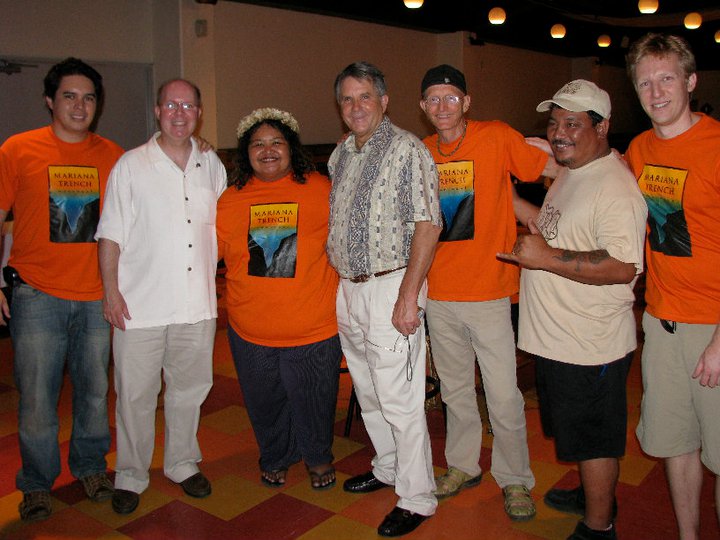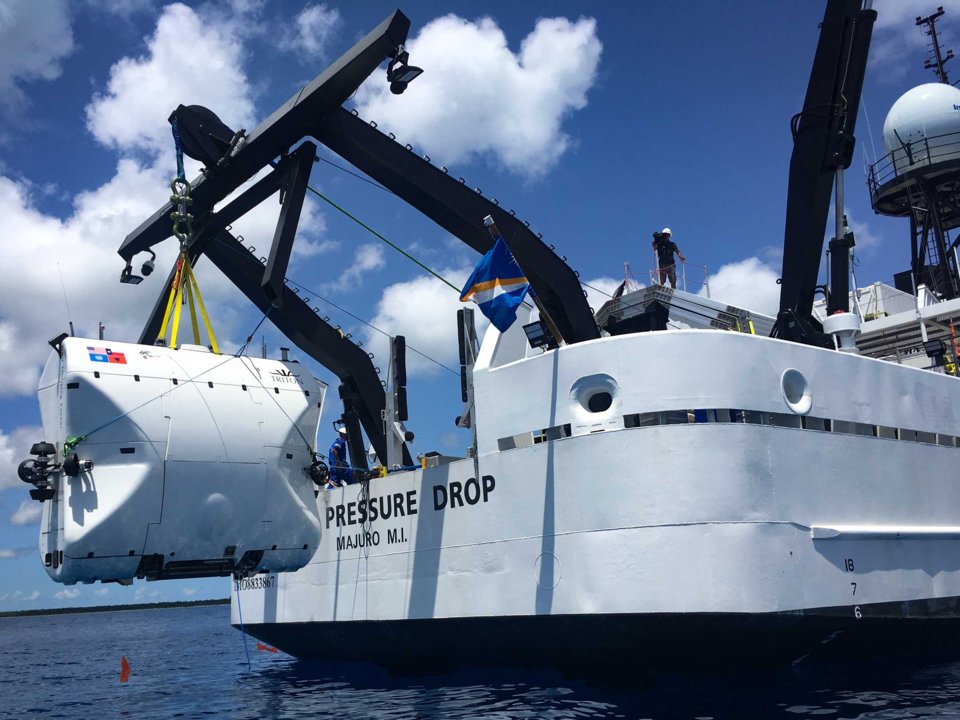For over 50 years, deep-ocean explorers have been able to claim that more people have walked on the moon than have dived to the deepest point on the Earth. Only two men descended into Challenger Deep in the 20th century–Don Walsh and Jacques Piccard–they were joined in the early 2010s by director James Cameron. Earlier this year, Victor Vescovo became the fourth to reach the bottom of Challenger Deep and, over the course of several subsequent dives this summer, the ranks of those who’ve reached the deepest ocean has swelled.
Astronaut, oceanographer, and former NOAA Administrator Kathy Sullivan and explorer and mountaineer Vanessa O’Brien became the first and second woman to dive to the bottom of Challenge Deep aboard the privately owned HOV Limiting Factor, piloted by Vescovo and his team.
June was a banner month for private exploration, with both new record-setting dives to Challenger Deep and the launch of the SpaceX crewed Dragon Capsule that successfully rendezvoused with the International Space Station. As boundary breaking technologies become more accessible to civil society and governments transition more and more exploration funding to private entities or public/private partnerships, increasingly activities in the deep ocean in areas beyond national jurisdiction will be conducted by private individuals, adding a new layer of complexity to the already complex seascape of high seas policy.
Reliable, safe transport to the deepest point in the ocean by private vessel, rather than through military or state-owned vessels, represents a significant shift in ocean access. Where once only public efforts by wealthy nations could reach the deepest places on the planet, Private individuals can maintain an ongoing presence on the deep seafloor. But many experts and critics point out that privatization of the deep ocean is not democratization of the deep ocean, and that, far from advancing our understanding of the deep sea, endeavours like this represent a backwards slide into the early days of exploration.
The technical achievements of the Five Deeps team are impressive but many within Pacific Island communities question the expedition’s colonial lineage and its failure to involve anyone from Palau, Guam, or the Commonwealth of the Northern Mariana Islands, all of which have islands positioned on the edge of the Mariana or Yap Trenches.
While previous expeditions to the bottom of the deepest parts of the ocean have been met with praise, the Five Deeps expedition has garnered an unprecedented level of criticism from the scientific, conservation, and indigenous rights communities. Numerous Pacific Island conservationists have noted that, despite operating within the waters of the Federated States of Micronesia, Guam, and the Commonwealth of the Northern Mariana Islands, and despite Challenger Deep itself being positioned along the traditional voyaging route between Yap and Guam, Vescovo and his team have made no apparent attempts to reach out and engage with ocean stakeholders who live and work on the edge of the Trench. Describing the venture as Parachute Adventurism, Angelo Villagomez, an ocean conservation professional from Saipan who led the campaign to establish the Mariana Trench Marine National Monument, notes that Five Deeps has not “engaged in any efforts by local people to protect the Mariana Trench or asked any locals to participate.”
Biological Oceanographer Dr. Julie Huber noted in an unpublished letter in response to the New Yorker’s glowing coverage of the expedition that Vescovo and his teams failed a basic test of inclusivity and instead focused on the same 19th century narratives of colonial exploration that many seriously engaged in ocean science and exploration have been pushing against for the last two decades. “Many barriers exist to creating a culture of inclusion and equity in oceanography, but the portrayal of deep-sea exploration in this story reflect the fields’ origins, and it is no longer the reality of modern oceanographic research nor the future we strive for.” says Huber.
To add insult to injury, Vescovo announced via Twitter that he had named three trenches off the CNMI coastline, features well known to local stakeholders, with, in some cases, the Spanish names of the adjacent islands, and without consultation or consent of the people who have fished and voyaged across those waters for centuries. The Mariana Trench, itself, is notably named not for any characteristic of the surrounding islands or the people that inhabit them, both for the Spanish queen who financed Jesuit missions to convert the indigenous peoples of Guam and the Mariana Islands.
“When all of the benefits of exploring the Mariana Trench go to rich white adventurers who are not from the Marianas,” Villagomez argues in a follow-up tweet, “it makes it really hard to get local people to support ocean conservation.”
“The ocean deserves better.” concludes Huber.
The Deep-sea Mining Observer was unable to obtain a comment from the Five Deeps team.
Featured Images: Friends of the Mariana Trench during the 2008 campaign to obtain Marine National Monument status for the Mariana Trench and surrounding island and seamounts.
Disclosure: Thaler worked with Villagomez on a campaign to expand the Mariana Trench Marine National Monument in 2016 and with the Friends of the Mariana Trench to run an underwater robotics capacity building program in Saipan in 2018.

